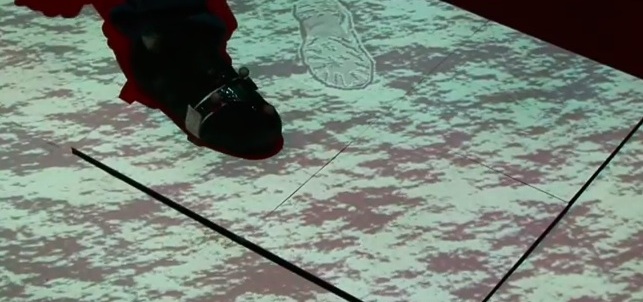McGill researcher makes strides on virtual ground
by Brian Bloom — Mar 7 '14
by Brian Bloom — Mar 7 '14

The person: Jeremy Cooperstock is an associate professor in the department of electrical and computer engineering at Montreal’s McGill University. He’s a well-traveled person whose CV shows a multi-disciplinary academic with interests in IT, media, psychology, and more. His journey started in the 1980s and has taken him around the world many times since.
Today, he’s the director of McGill’s Shared Reality Lab. One of the many research jobs he’s been involved in is an international effort known as the Natural Interactive Walking project, which uses a range of high-tech gadgets: audio, visual and, most importantly, a “smart” floor that can simulate walking on different surfaces.
The project: At the lab the NIW project is focused on people’s feet. The smart floor allows users’ moving feet to sense some startling things, from walking on “sand” to “something like ice,” Cooperstock says.
The basic aim of the project is to study the full range of tactile experiences people get from walking on different surfaces. This will, hopefully, lead to new technologies, both hardware and software, that will make the virtual ground seem very real, he adds.
His team at the lab will strive to innovate more, making these sensations seem more real by testing new ways of removing the many technological barriers to achieve the perfect system.
The progress: One of these further scientific explorations includes “developing dynamic levels of friction so that the user doesn’t experience a constant kind of ‘slip factor,’” says Cooperstock. As another effort, the lab is working on rendering vibrations to the feet that simulates what happens when they water, before the subject physically makes contact with the ground.
The vibrations are created through a tile surface, but if simulation of water contact is needed, it creates a ‘conflict’,” he says. “It’s telling you two competing things.”
“What we want to do is avoid that kind of perceptual conflict and render something that is far more consistent.”
Cooperstock says he hopes to overcome such problems by developing new hardware and software technology that can better “render or simulate the experiences of walking on various ground surfaces.”
The prospects: Cooperstock is confident that the lab’s research will have commercial appeal. The entertainment value alone could be enough to make that happen, he says. For example, the lab will bring in users on a given day and ask them if they want to feel the virtual sensation of walking on snow.
“That’s pretty cool,” he says, adding that he enjoys seeing many people trying the lab’s frozen pond demo “and watching their reactions when the ice ‘cracks’.”
It could also have a plethora of real-life applications in more serious areas, including the medical field. It’s not hard to imagine hospitals treating many kinds of walking problems in a safe and controlled environment in the future.
The passion: What really drives Cooperstock to do this kind of work is the “highly multi-disciplinary” aspect of the research in projects like the NIW.
Many academics from around the world are collaborating and it’s bringing them all closer together. He says this is what keeps him excited and engaged at the lab. The work it’s doing “spans the boundaries of mechanical engineering, computer science, psychology, electrical engineering.”
Combined research in these multiple fields hasn’t been possible in the past, Cooperstock adds. However, IT has opened up new possibilities to do so.
The big motivator for him, as well as his fellow academics, is “the ability to make significant advances in an area that is far removed from one’s own domain of expertise.”
Ultimately, his passion for collaborative research has led to a desire to make a difference in the world. As Cooperstock puts it, “my lab tends to get involved in too many projects for the simple reason that we can’t bear the thought of not being involved in them, especially when the associated applications present opportunities to improve people’s lives.”
Brian Bloom is an independent journalist and tech blogger whose work has appeared in Computing Canada, PC World, CIO Canada and various other publications. He was previously a staff writer at ComputerWorld Canada, covering a wide range of enterprise technology topics.
Twitter LinkedIn Google+
Apr 17 '14

Apr 16 '14

Apr 15 '14

Apr 11 '14
Copyright © 2016 CommerceLab


